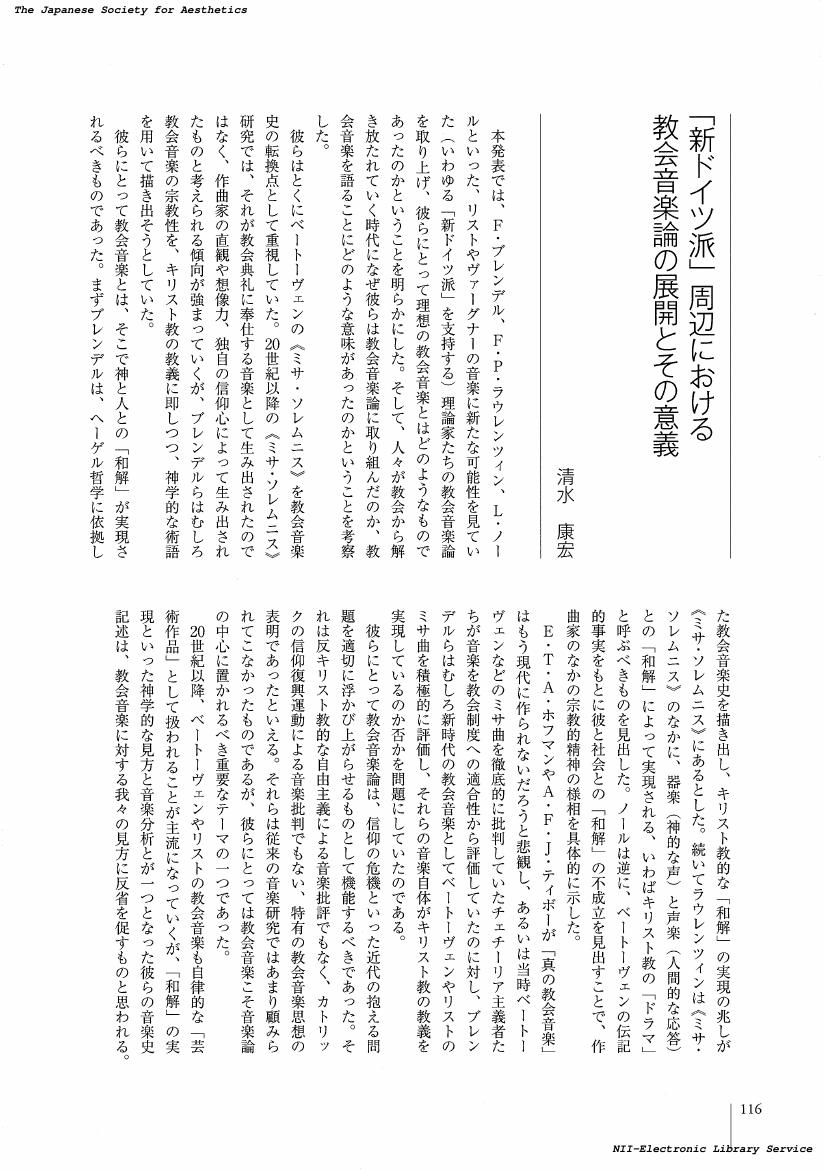1 0 0 0 OA ルートヴィヒ・ノールの《ミサ・ソレムニス》論 「フモリスト」ベートーヴェンの教会音楽
- 著者
- 清水 康宏
- 出版者
- 美学会
- 雑誌
- 美学 (ISSN:05200962)
- 巻号頁・発行日
- vol.69, no.1, pp.133, 2018 (Released:2019-06-01)
In the 19th century Beethoven’s Missa Solemnis was criticized for not being suitable for a church service because of its large-scale orchestration and difficulty in a vocal part. Ludwig Nohl, a music critic who was around “the new German school,” however, argued the significance of this Mass as the religious music and the religious manner of the composer, instead of discussing its usability in the worship of the church. He considered Missa Solemnis as “Scheinmesse (apparent Mass)” which was dissolved into a merely aesthetic appearance. It was because that the “transcendent” mindset of the composer never realized the beauty which was not “apparent” but concrete or “immanent” and was for the German people. This mindset was created from the personality of this composer as “Humorist.” In this Mass, Nohl found the expression of the complex mind which modern artists had. The precedent studies show that Nohl only evaluated this Mass negatively, but in this paper, I examine his document in more detail and explore how he actually thought about the significance of this Mass.
1 0 0 0 OA 「キリスト教の悲劇」としての《ミサ・ソレムニス》 ルートヴィヒ・ノールのベートーヴェン論
- 著者
- 清水 康宏
- 出版者
- 美学会
- 雑誌
- 美学 (ISSN:05200962)
- 巻号頁・発行日
- vol.68, no.1, pp.139, 2017 (Released:2018-07-01)
1 0 0 0 OA 「新ドイツ派」周辺における教会音楽論の展開とその意義(第六十五回美学会全国大会発表要旨)
- 著者
- 清水 康宏
- 出版者
- 美学会
- 雑誌
- 美学 (ISSN:05200962)
- 巻号頁・発行日
- vol.65, no.2, pp.116, 2014-12-31 (Released:2017-05-22)

